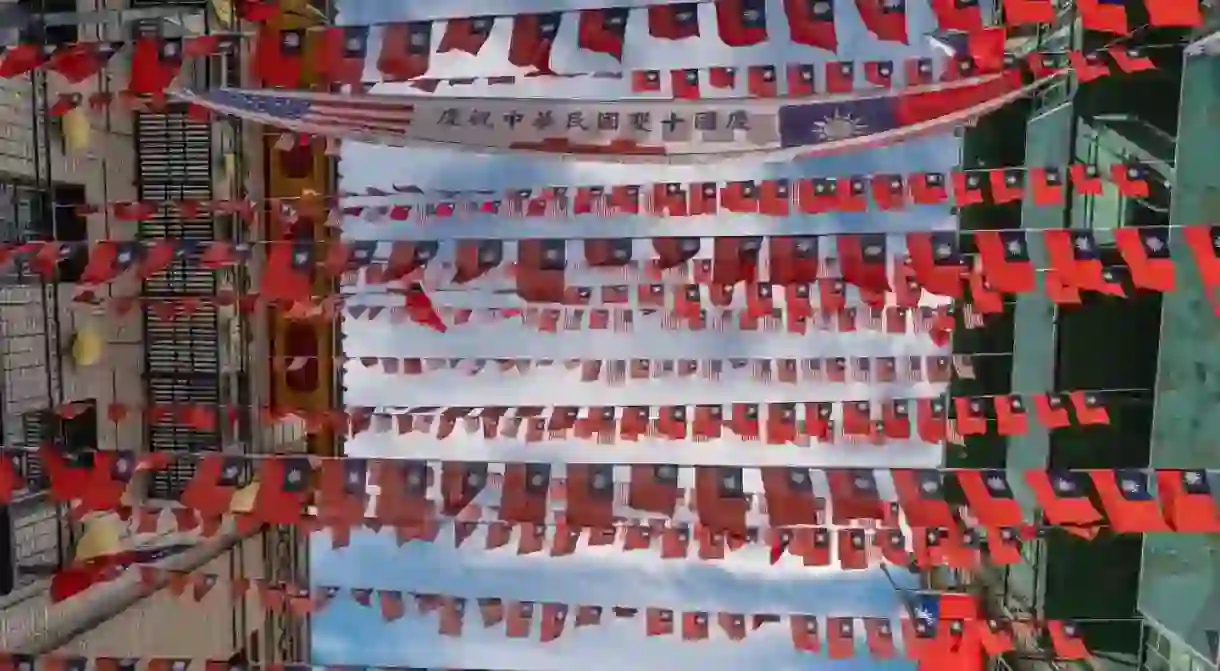The 14 Best Things To Do and See in San Francisco's Chinatown

San Francisco’s Chinatown is the largest Chinatown outside of Asia, as well as the oldest in North America, making it a worthwhile visit while you’re staying in this buzzing city. Listed below are the best things to do and see so you can plan your day in this historic hub.
Chinese New Year
Architectural Landmark

If you’ve never seen a Chinese New Year in person, then this is your perfect opportunity. The parade usually begins at Second and Market Street, and will consist of the Flower Market Fair, the Community Fair, Chinatown YMCA run, ribbon cutting, Miss Chinatown pageant, and basketball jamboree. It lasts a couple of hours and is a great way to learn about some of the Chinese culture.
Chinatown Dragon Gate
Architectural Landmark

The Dragon Gate is the entry point to Chinatown off of Grant Avenue, the oldest street in San Francisco. It was given to San Francisco by the Republic of China to symbolize the most important street in the neighborhood. The gate is inscribed with a message from the first President of the Republic of China and is a great first stop in this amazing neighborhood.
Fortune Cookie Factory
Shop
The Fortune Cookie Factory is responsible for producing more than 20,000 fortune cookies a day. This amazing factory still makes its cookies by hand, something apparently no other factory does. It was opened in 1962 and is considered a hidden gem of San Francisco. It can be an extremely hard place for tourists to find because it is a tiny store front located on Ross Alley, but make sure to stop in and buy some fortune cookies…
Eat Peking Duck
Architectural Landmark
Peking Duck is a storied dish from Beijing that’s been prepared for emperors and special occasions for centuries. Bottom line: It’s an important dish that, for anyone who likes duck, is a total must-try. San Francisco’s Chinatown has an abundance of restaurants that offer this crispy, succulent meal, all of which are worth a try. Hunan’s Home Restaurant is often cited as one of the best, alongside other mainstays like Sam Wo Restaurant.
Recommended by Clayton Mory Schuster.
Karaoke at Bow Bow Cocktail Lounge
Bar, Cocktails
If it’s late and you’re in Chinatown, you should head toward North Beach and check out one of the karaoke bars near Columbus. The atmosphere is on the divey side, but drinks are usually cheap and the crowds are all just looking to relax and have a good time. Bow Bow Cocktail Lounge is the place to go if you want to get groovy and sing your heart out, while Mr. Bing’s and Red’s Place are also nearby and sometimes have karaoke going on.
Recommended by Clayton Mory Schuster.
Sing Chong Building, San Francisco
Building, Museum
Bank of Canton
Architectural Landmark
Another site steeped in history, the Bank of Canton was once formally known as the Chinese Telephone Exchange building. It began as the first public telephone pay station in 1891, and by 1894, was incorporating switchboards to serve subscribers to the telephone system. The workers were required to memorize each subscriber by name, address, and occupation, and to know five separate dialects of Chinese and English. The building was renovated after the 1906 earthquake and remained a telephone exchange until 1949, when rotary dial telephones took over.
Waverly Place
Architectural Landmark

Waverly Place is an alleyway in Chinatown known for being used in multiple films, like the Pursuit of Happiness, and you will recognize it because it is known as the ‘street with painted balconies.’ Waverly Place is an extremely unique area, because its history goes beyond that of Chinatown — it holds the first US post office that was located in San Francisco.
Tea Tasting
Shop, Market
Recommended by Clayton Mory Schuster.
Tien Hau Temple
Architectural Landmark
The Tien Hau Temple is the oldest Taoist temple in Chinatown and was founded in 1852 by the Cantonese clan association in San Francisco. Visitors must be aware they should make their way all the way to to third floor to see the temple, and to ensure they check out the different designs, too. This temple was extremely important to the people of San Francisco, which earned it a street name in Waverly Place.
Old Saint Mary's Cathedral
Church

Buddha's Universal Church
Church
Chinese Mai Tai at Li Po Cocktail Lounge
Bar, Cocktail Bar, Pub Grub
Recommended by Clayton Mory Schuster.
Exploring the streets
Architectural Landmark

The best part about Chinatown is the fact that tourists can experience a completely different cultural side to San Francisco. Saturdays are the busiest days in Chinatown, and tourists should start at the Grant Avenue Dragon Gate entrance and make their way down this main tourist street. Take time to duck into small shops and look at anything that may catch your eye. If they want to immerse themselves and hang with the locals, tourists should make their way to Stockton Street, where locals do their shopping, bartering, and are often seen arguing over their game of dice.













